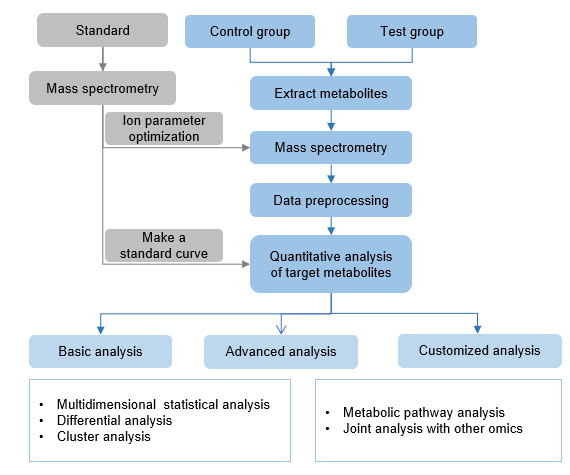Magnoflorine Analysis Service
Submit Your InquiryWhat is Magnoflorine?
Magnoflorine is a natural alkaloid found in a variety of plant species, including traditional Chinese medicinal herbs. It has unique chemical properties. As a bioactive compound, magnoflora exhibits diverse activities including antioxidant, anti-inflammatory and antibacterial properties. Therefore, accurate analysis of magnoflorine content in plant extracts and herbal formulations is of utmost importance to researchers and pharmaceutical manufacturers.
Regarding the metabolism of magnoflorine, there is limited information available specifically on its metabolic pathways in humans. However, the metabolism of related aporphine alkaloids can provide some insights into the potential metabolic fate of magnoflorine.
When ingested, magnoflorine is likely to undergo hepatic (liver) metabolism, where it can be metabolized by various enzymes, including the cytochrome P450 (CYP) enzymes. These enzymes play a significant role in the metabolism of many exogenous compounds, including alkaloids.
The metabolic pathways of magnoflorine may involve processes such as oxidation, reduction, hydroxylation, and conjugation reactions. These reactions can lead to the formation of metabolites with altered chemical structures compared to the parent compound.
Analyzing the metabolism of magnoflorine is important to understand its pharmacokinetics, including absorption, distribution, metabolism, and excretion (ADME). It can also help identify potential metabolites with pharmacological activities or toxicological implications.
Creative Proteomics typically provides accurate quantitative and qualitative analysis of magnoflorine using liquid chromatography-mass spectrometry (LC-MS) and gas chromatography-mass spectrometry (GC-MS) to help identify and standardize herbs and ensure consistency in quality and efficacy. You can also understand the relationship between magnoflorine content and the biological activity shown by the herbal extract. In addition, we offer other alkaloid metabolism analysis. These high-throughput techniques allow the identification and quantification of parent compounds and their metabolites in biological samples.
 Molecular structure of magnoflorine
Molecular structure of magnoflorine
Magnoflorine Analysis Platform at Creative Proteomics
High Performance Liquid Chromatography (HPLC):
We use state-of-the-art HPLC systems equipped with a variety of detectors such as UV-Vis, fluorescence or diode array detectors. HPLC allows for the separation, identification and quantification of compounds in complex mixtures. It utilizes a stationary phase packed in a column and a mobile phase that elutes based on the interaction of the analytes with the stationary phase. Through precise control of flow rate, temperature and gradient programming, we can achieve excellent separation and detection of magnoflorine in plant extracts.
Mass Spectrometry (MS):
We combine HPLC with mass spectrometry to enhance the specificity and sensitivity of our analysis. Mass spectrometry allows for the determination of the molecular weight and structural information of compounds. We employ different types of mass spectrometers, including triple quadrupole, quadrupole-time-of-flight (Q-TOF), and ion trap instruments. By coupling HPLC with mass spectrometry, we can confidently identify and quantify Magnoflorine in complex samples, even in the presence of interfering compounds.
Sample Preparation Equipment:
To ensure accurate and reliable analysis, we utilize various sample preparation techniques and equipment. This may include solid-phase extraction (SPE) cartridges or disks, centrifuges, vortex mixers, and sonication devices. These tools allow for the extraction, purification, and concentration of Magnoflorine from different sample matrices, such as plant materials or herbal formulations.
Data Analysis Software:
These software platforms allow us to perform peak integration, calibration, quantification and statistical analysis. In addition, they assist in the generation of comprehensive reports with visual data representation.
Quality Control and Calibration Standards:
To ensure accuracy and reliability, we use certified reference standards for Magnoflorine analysis. These standards undergo rigorous quality control procedures and are traceable to international standards. Calibration curves are prepared using a series of standard solutions with known concentrations of Magnoflorine, allowing for accurate quantification of the compound in the samples.

Delivery standard
- Experimental procedure
- Parameters of HPLC and MS
- Raw data, chromatograms and mass spectra
- Metabolites quantification data
- Custom analysis report





